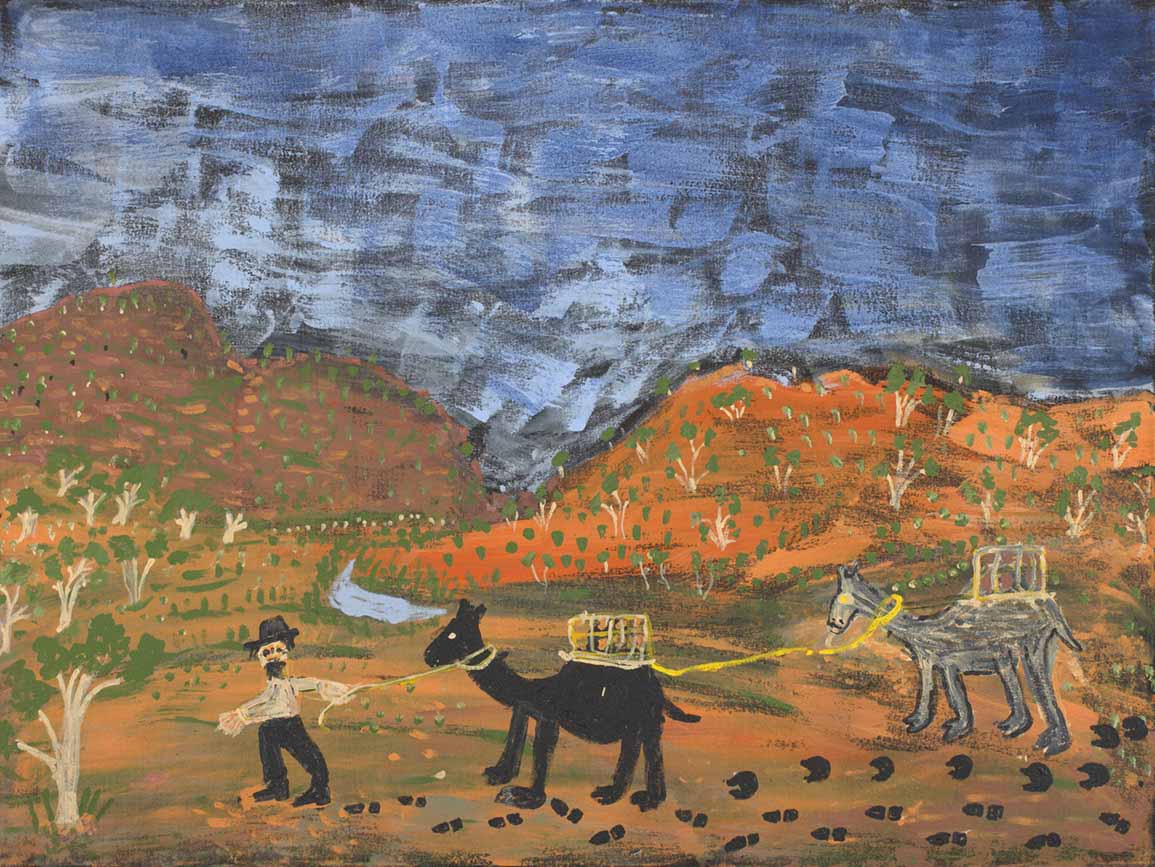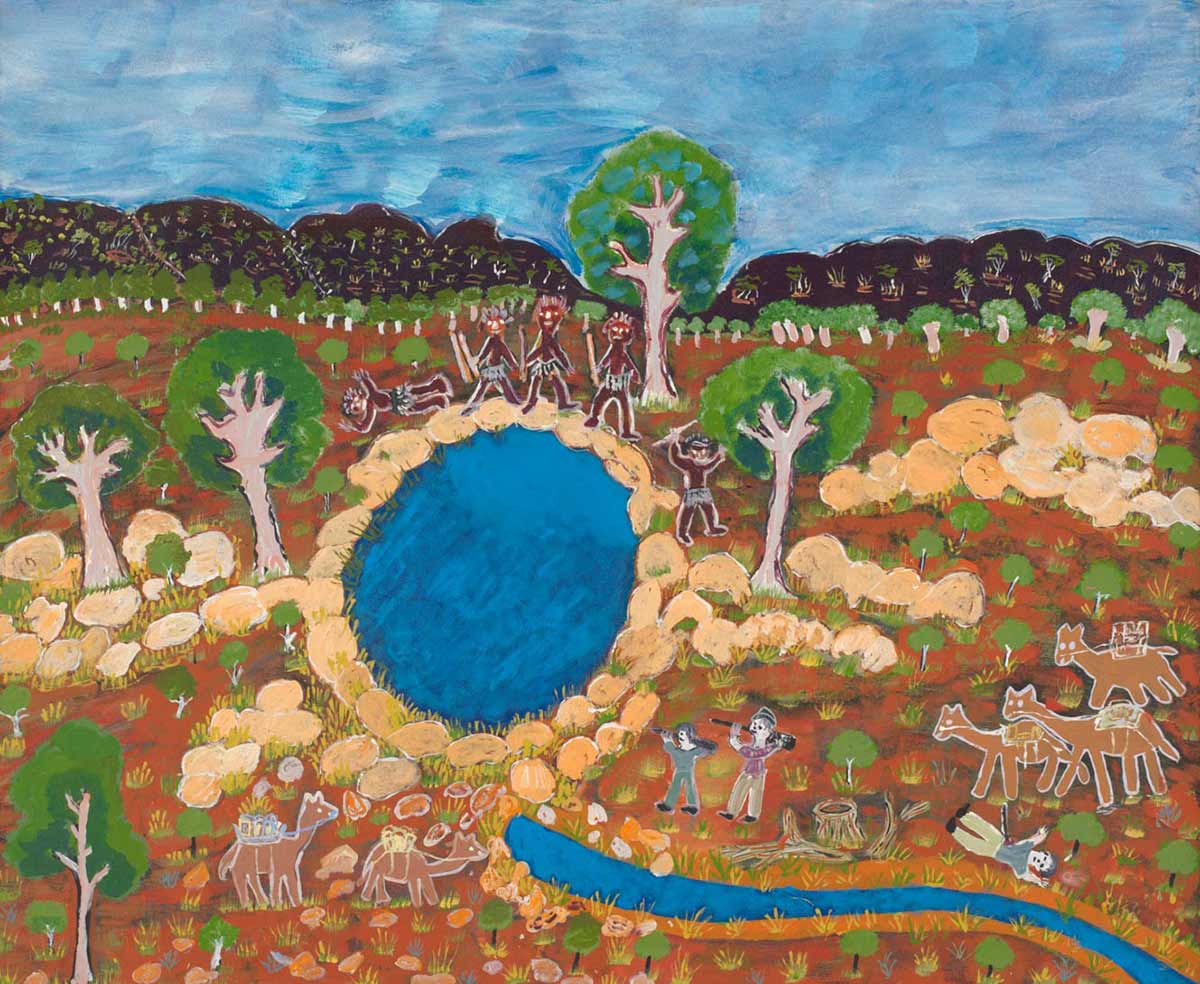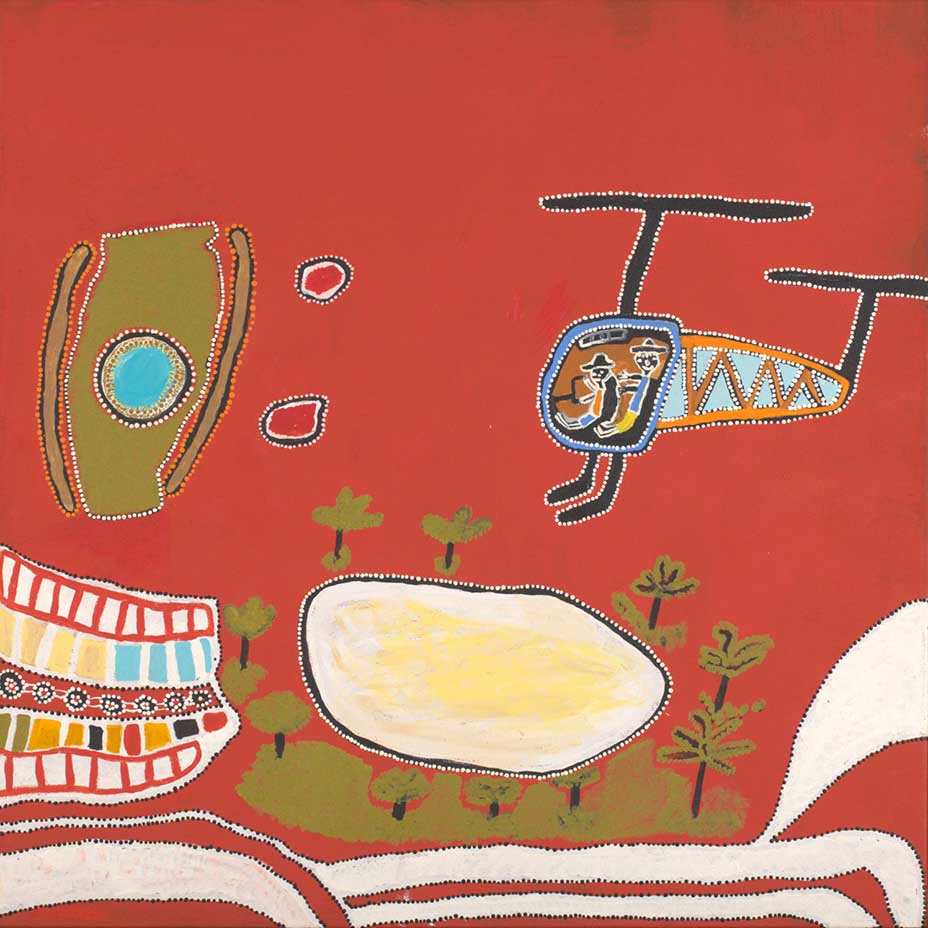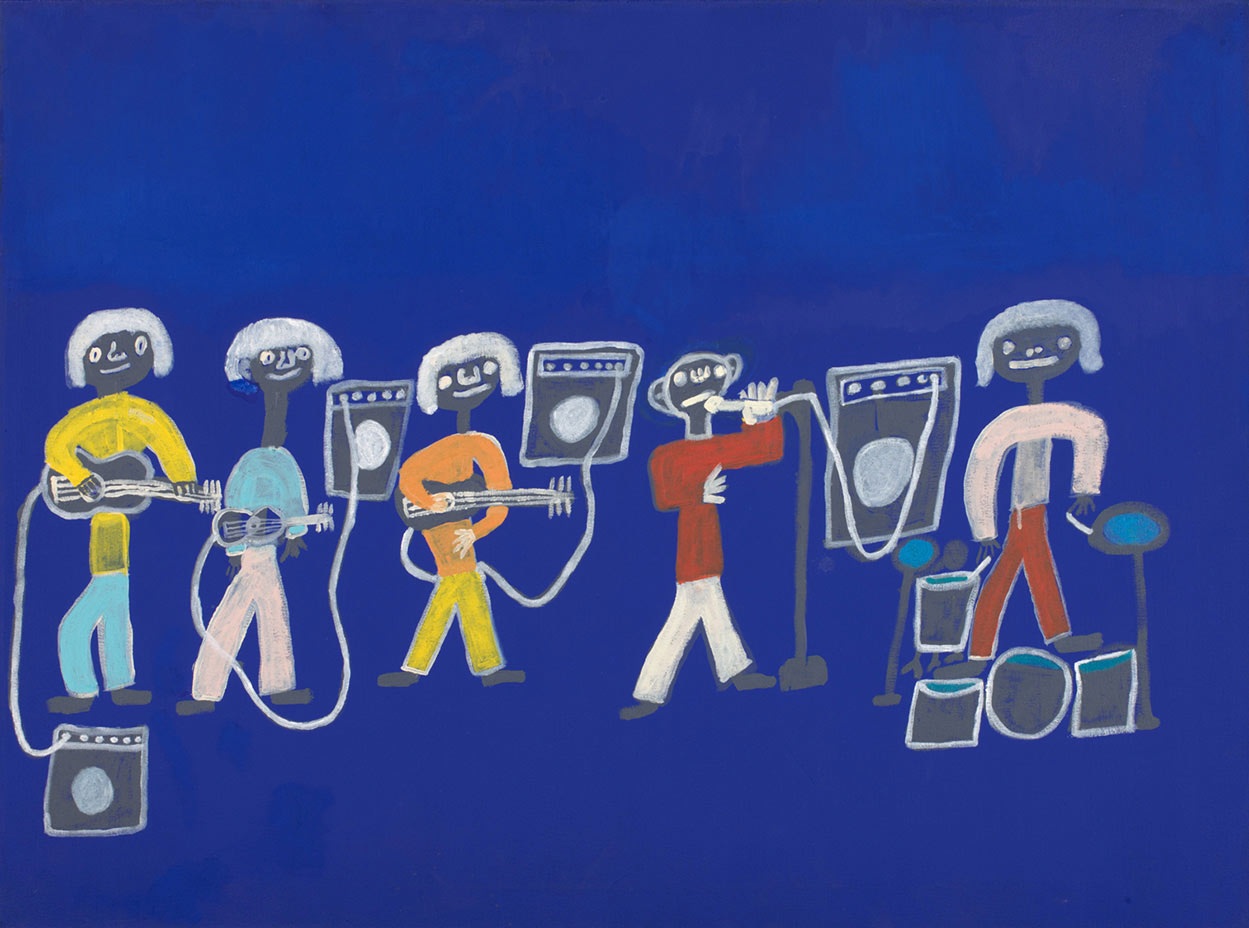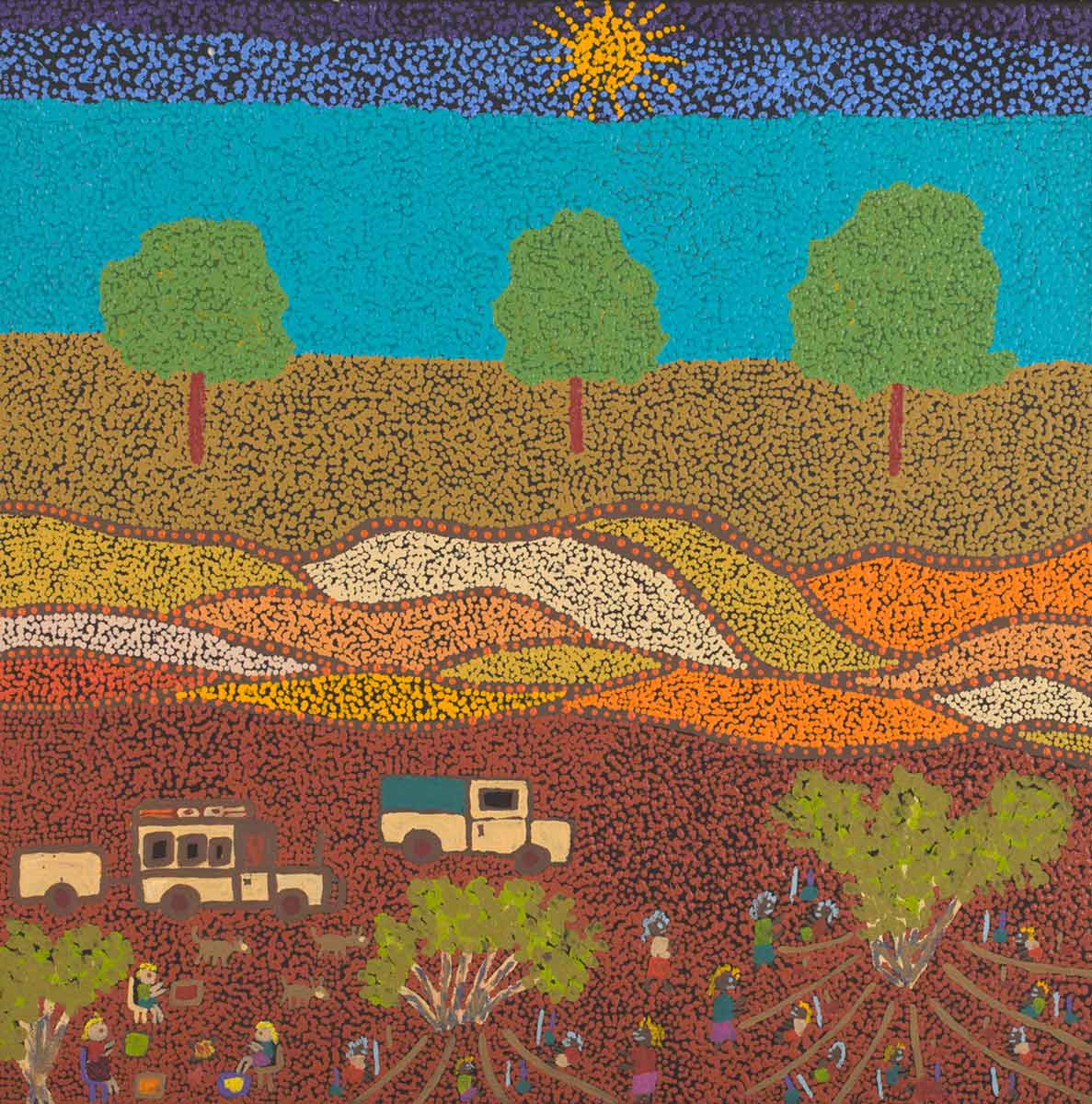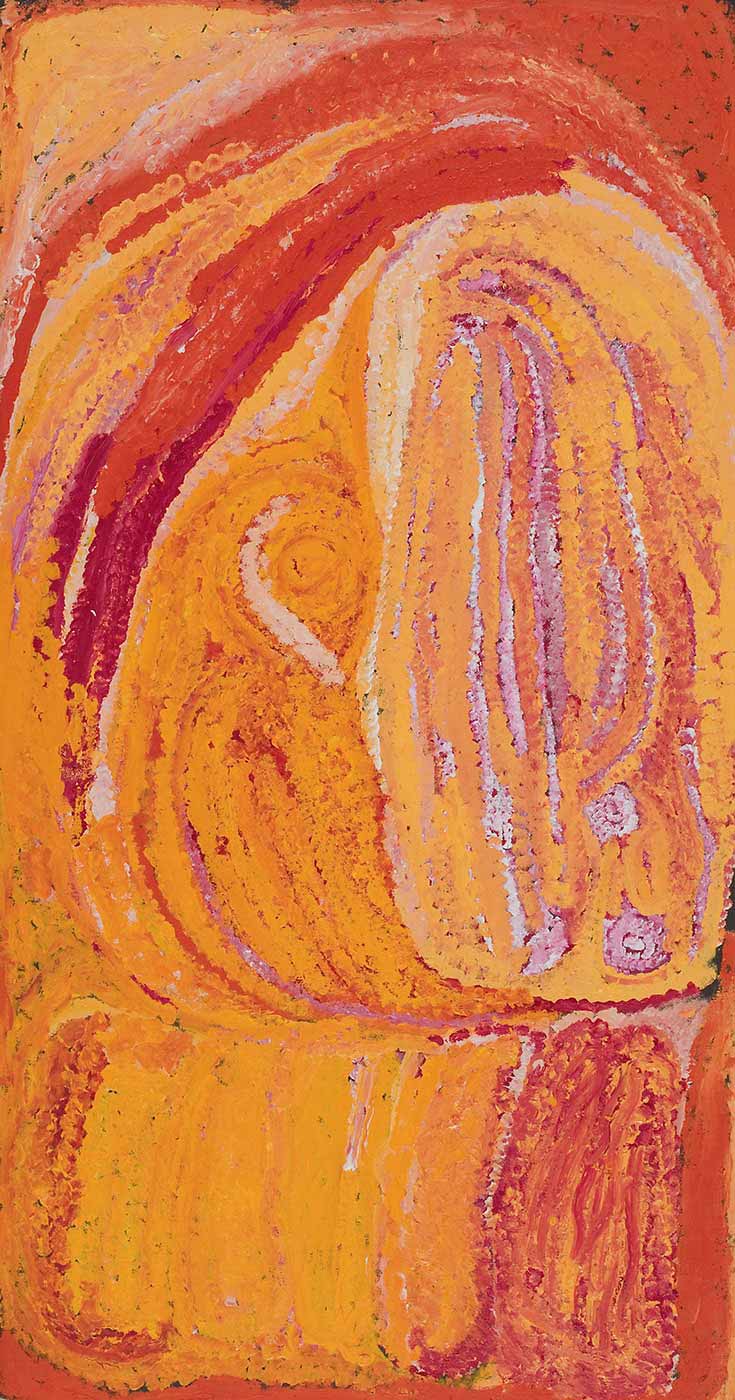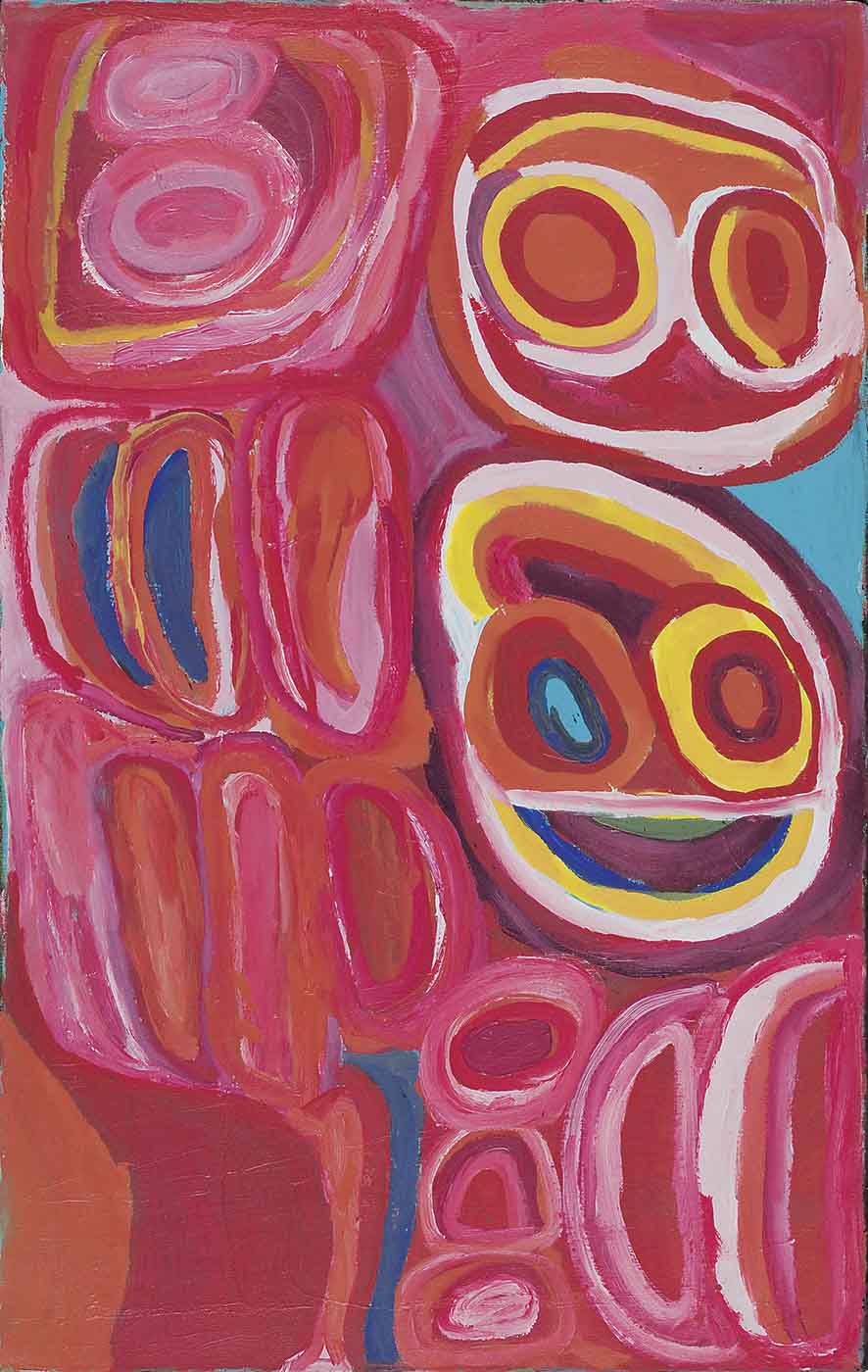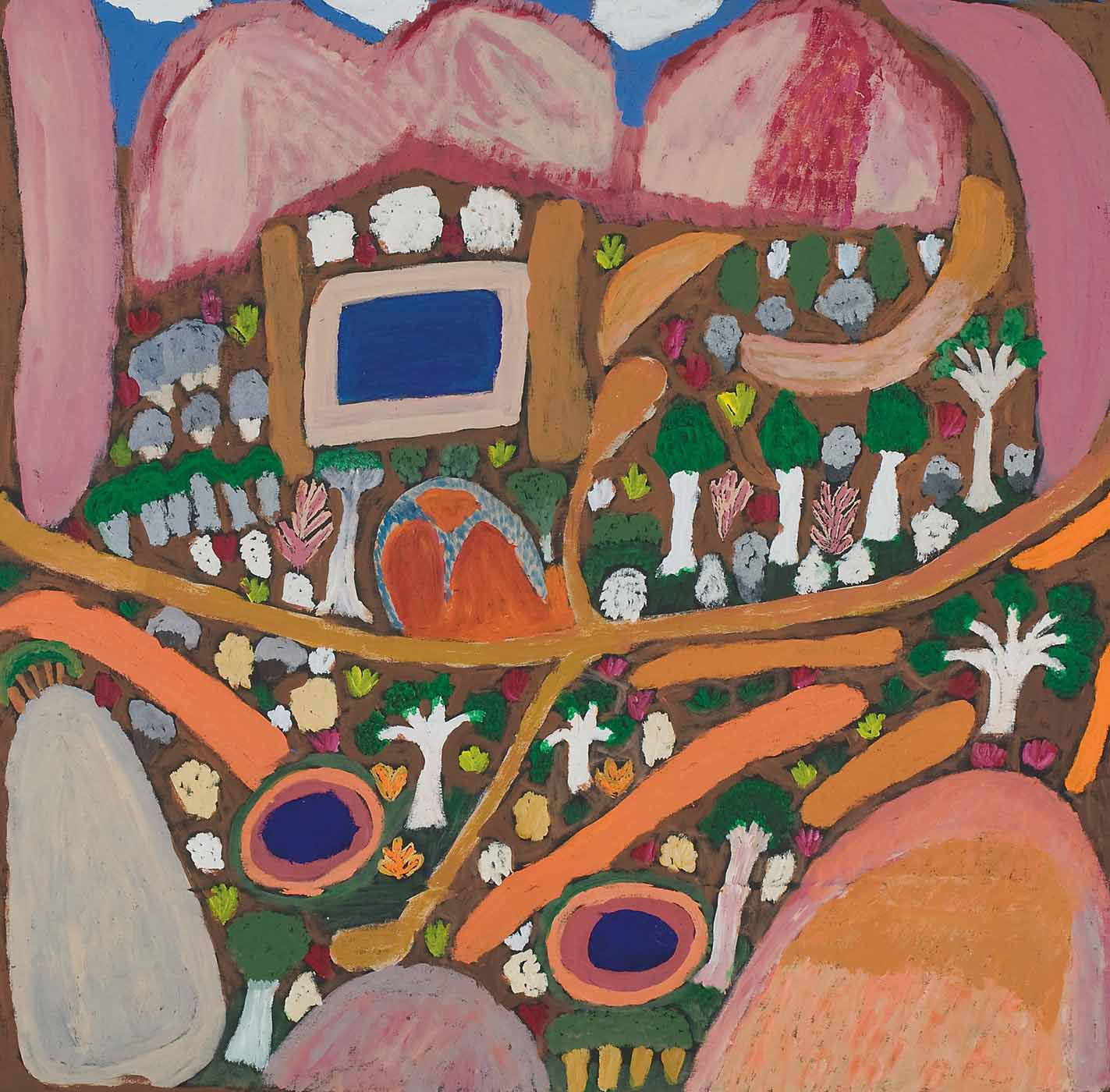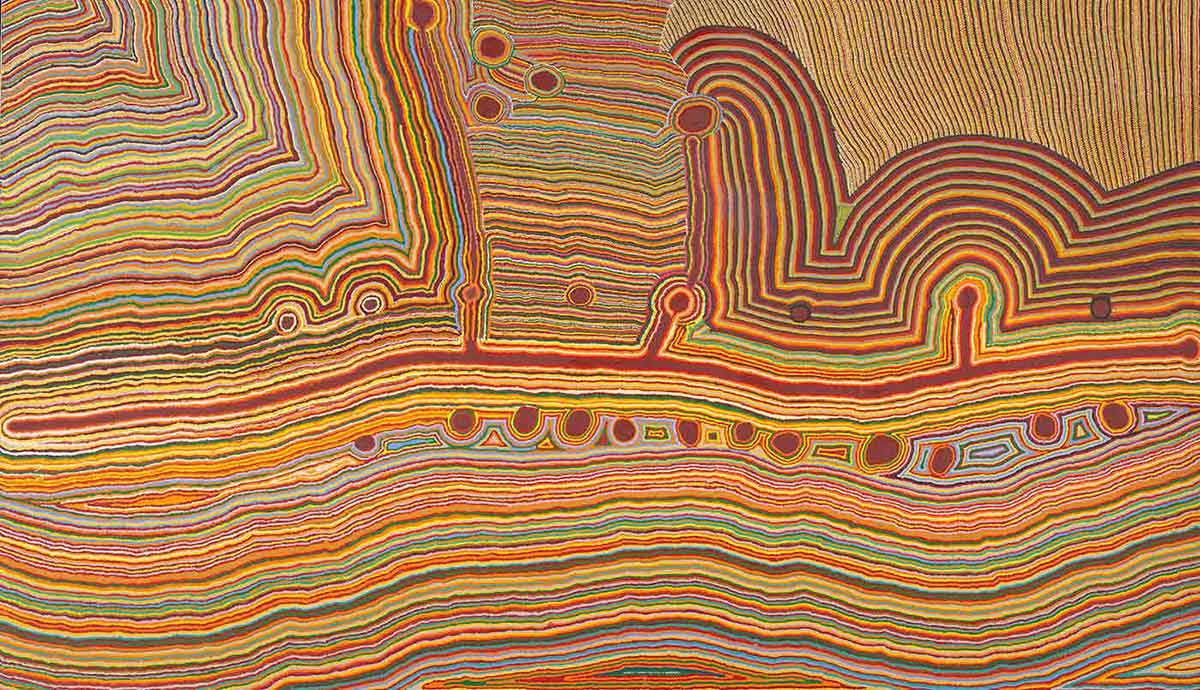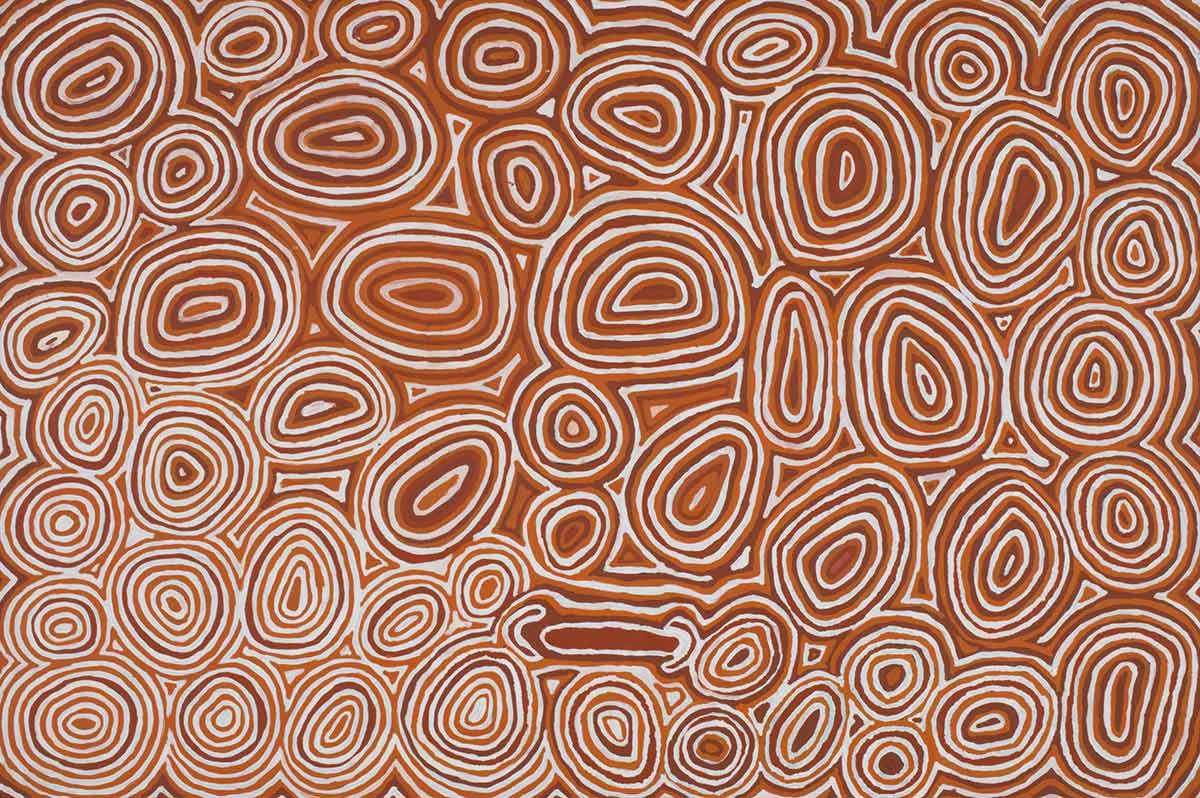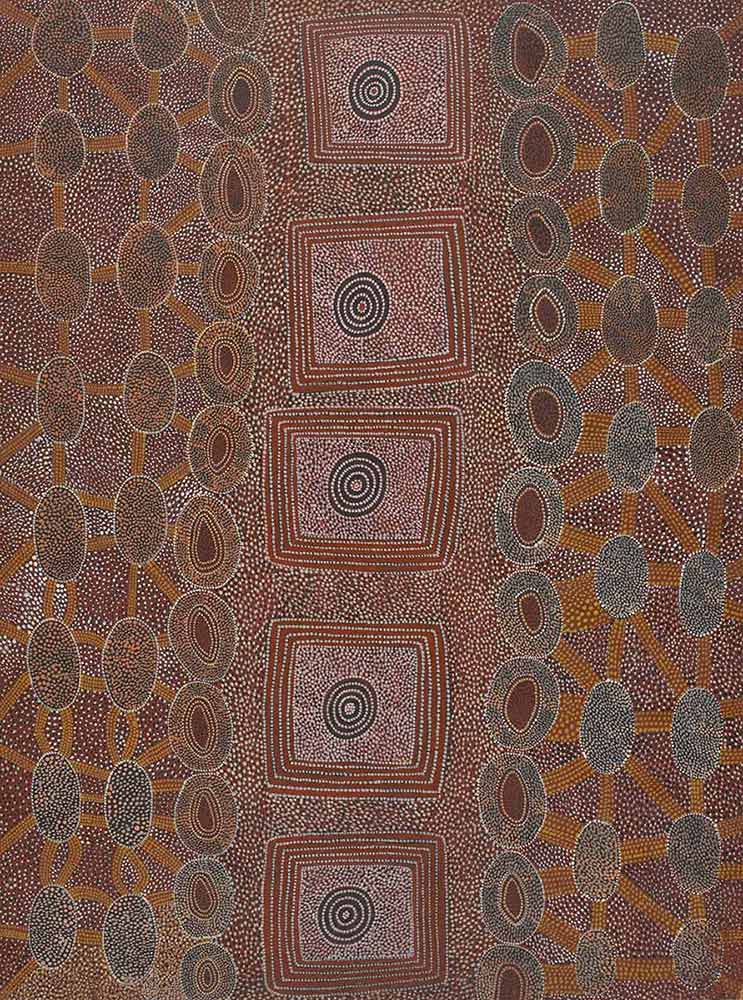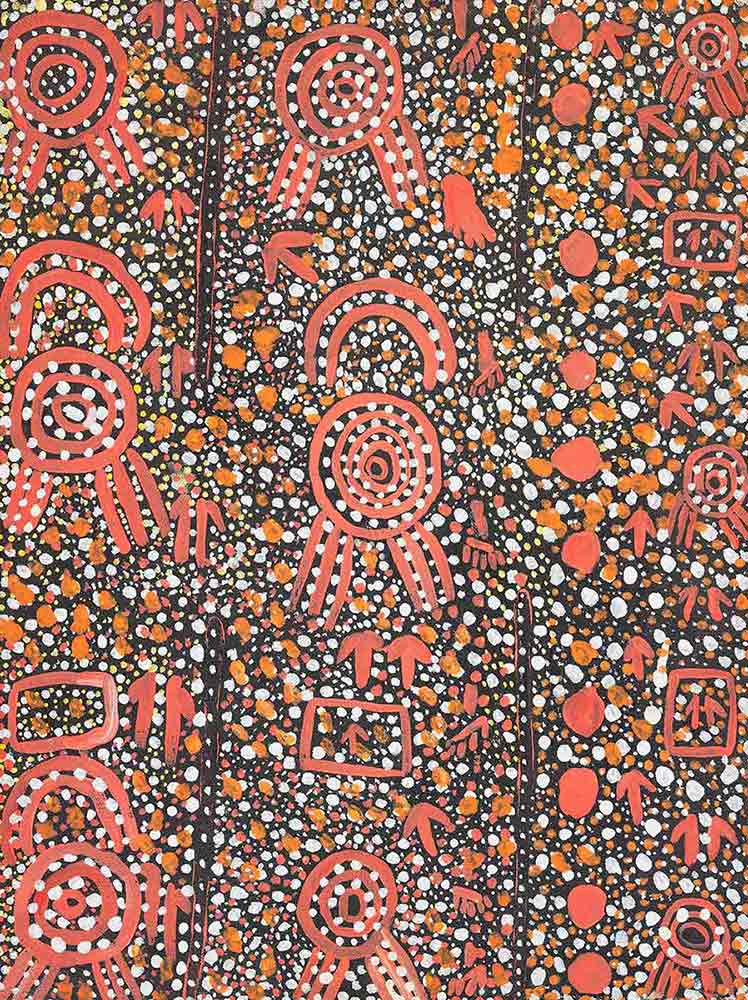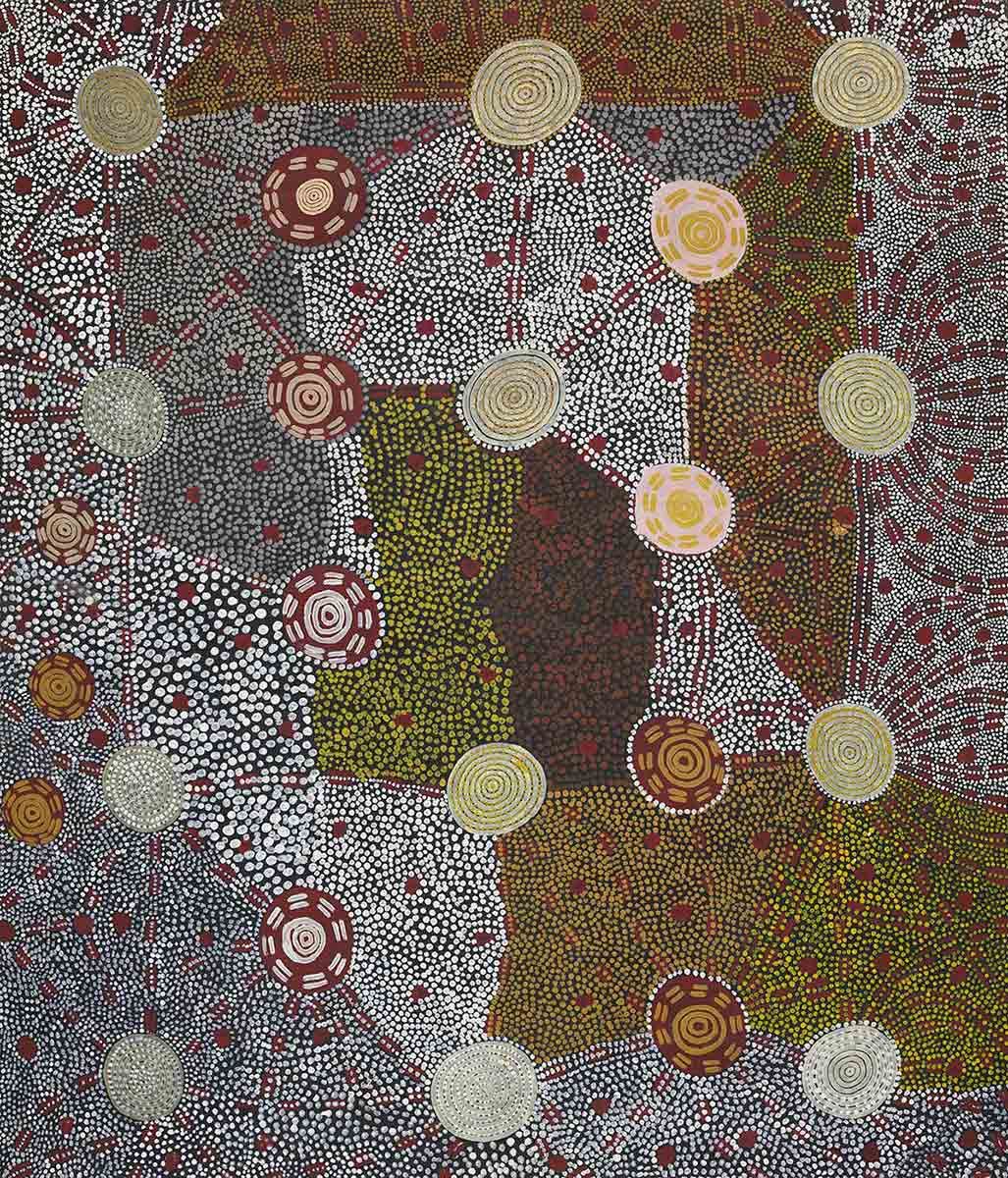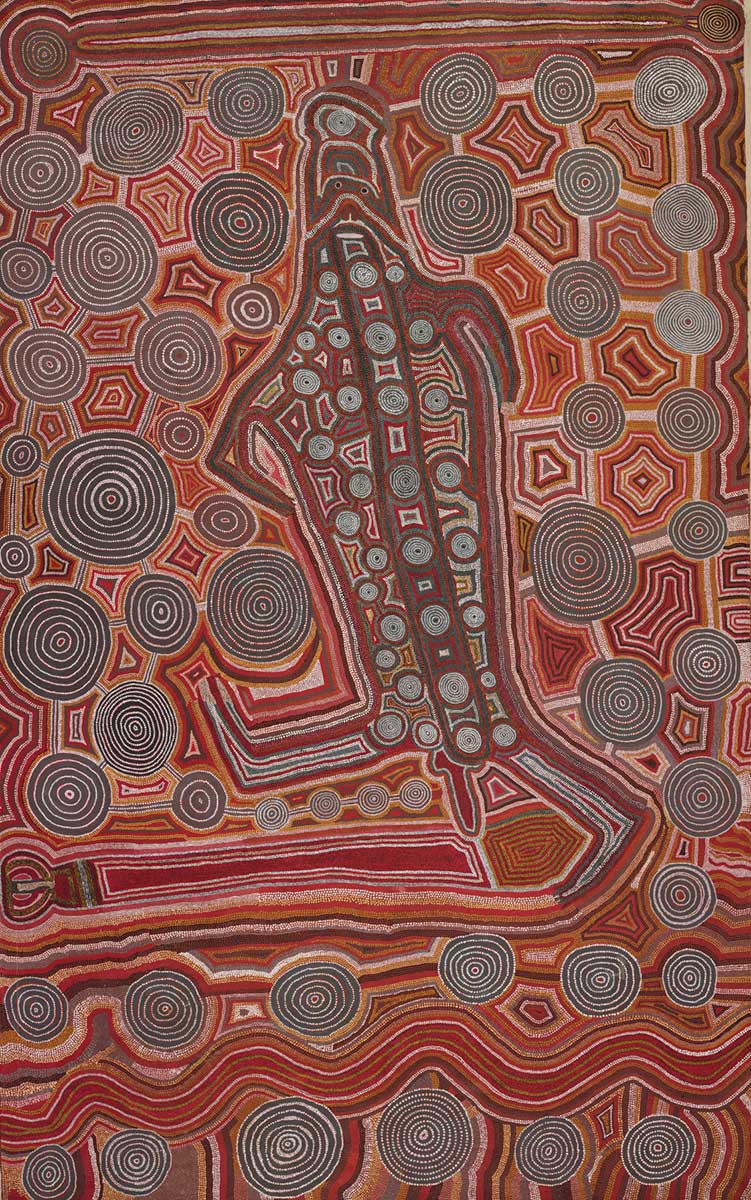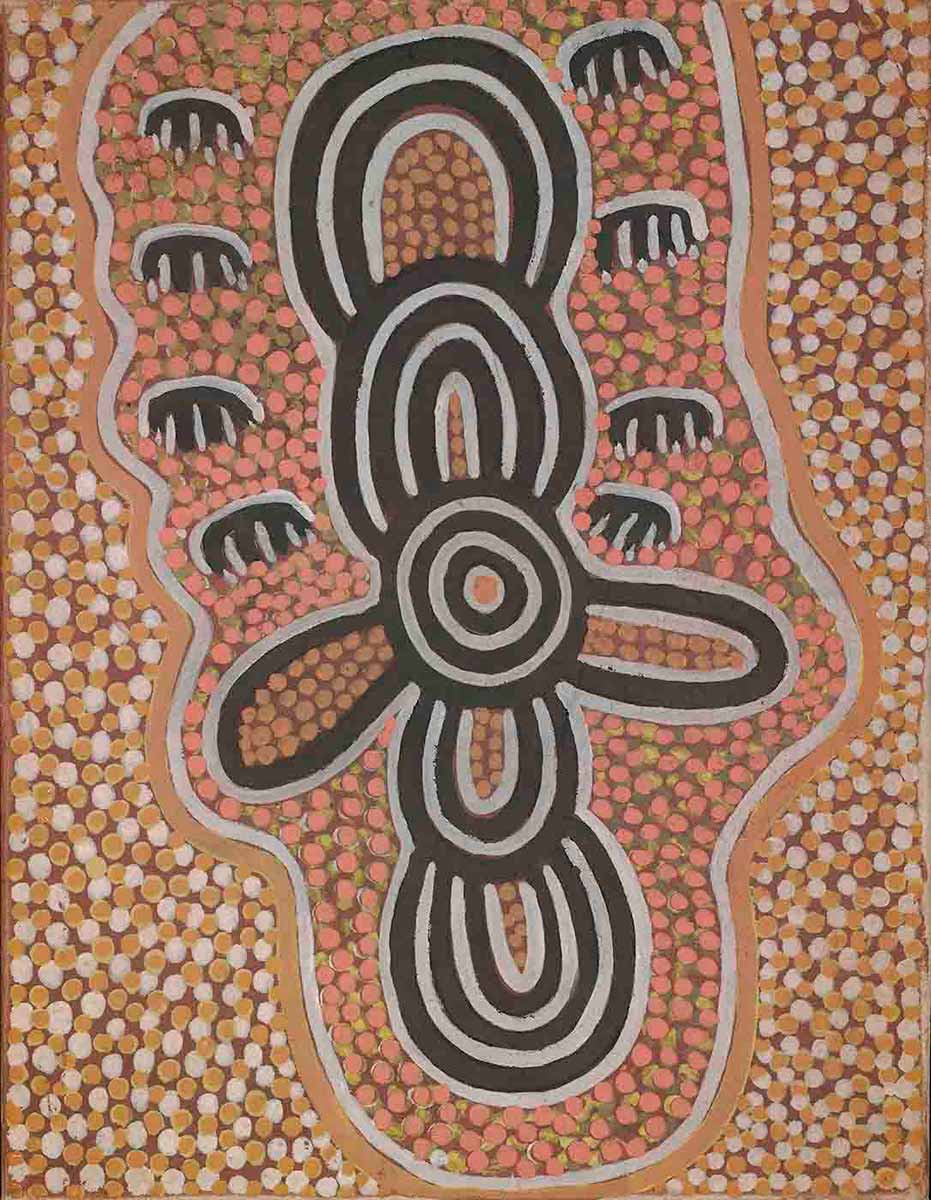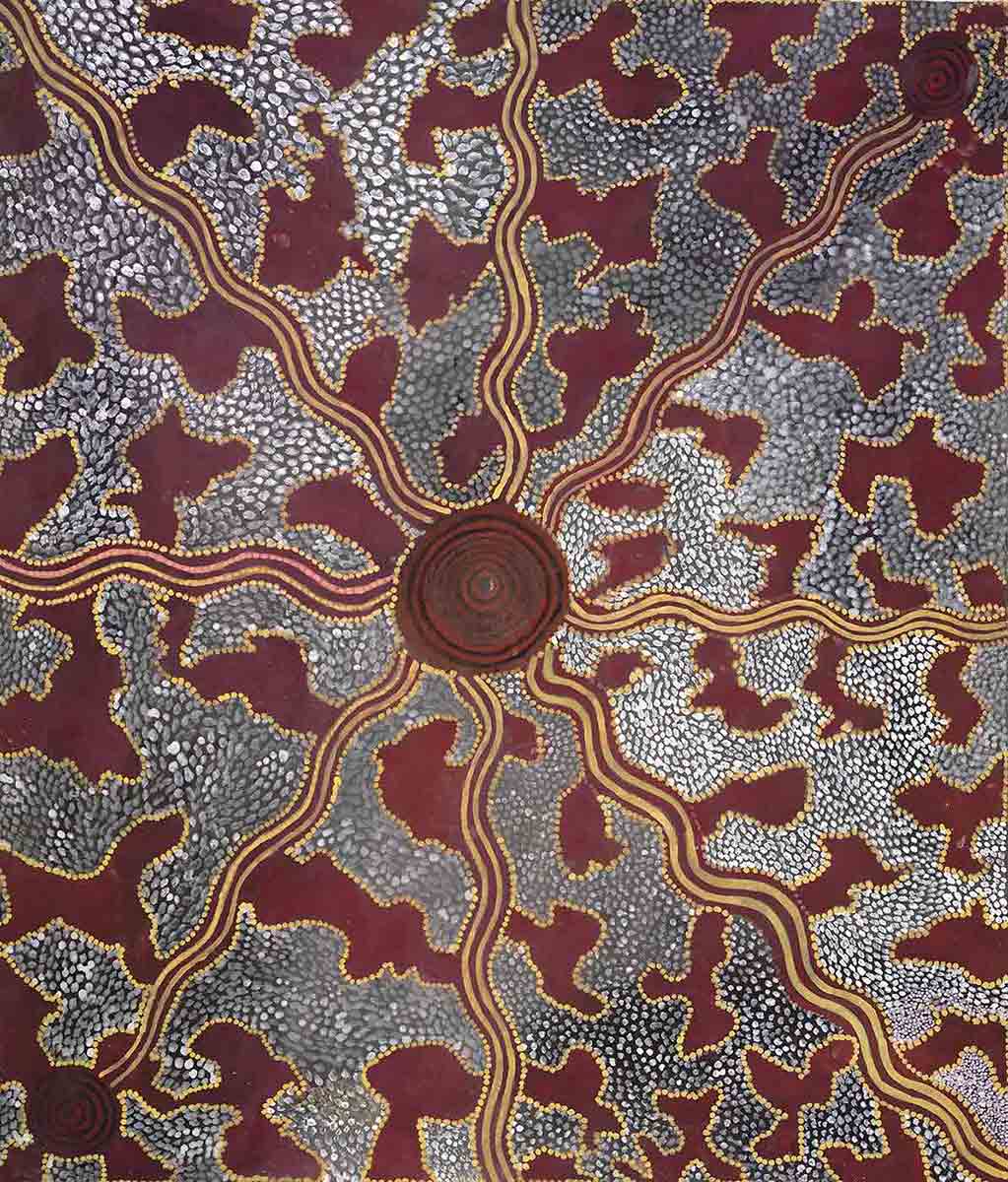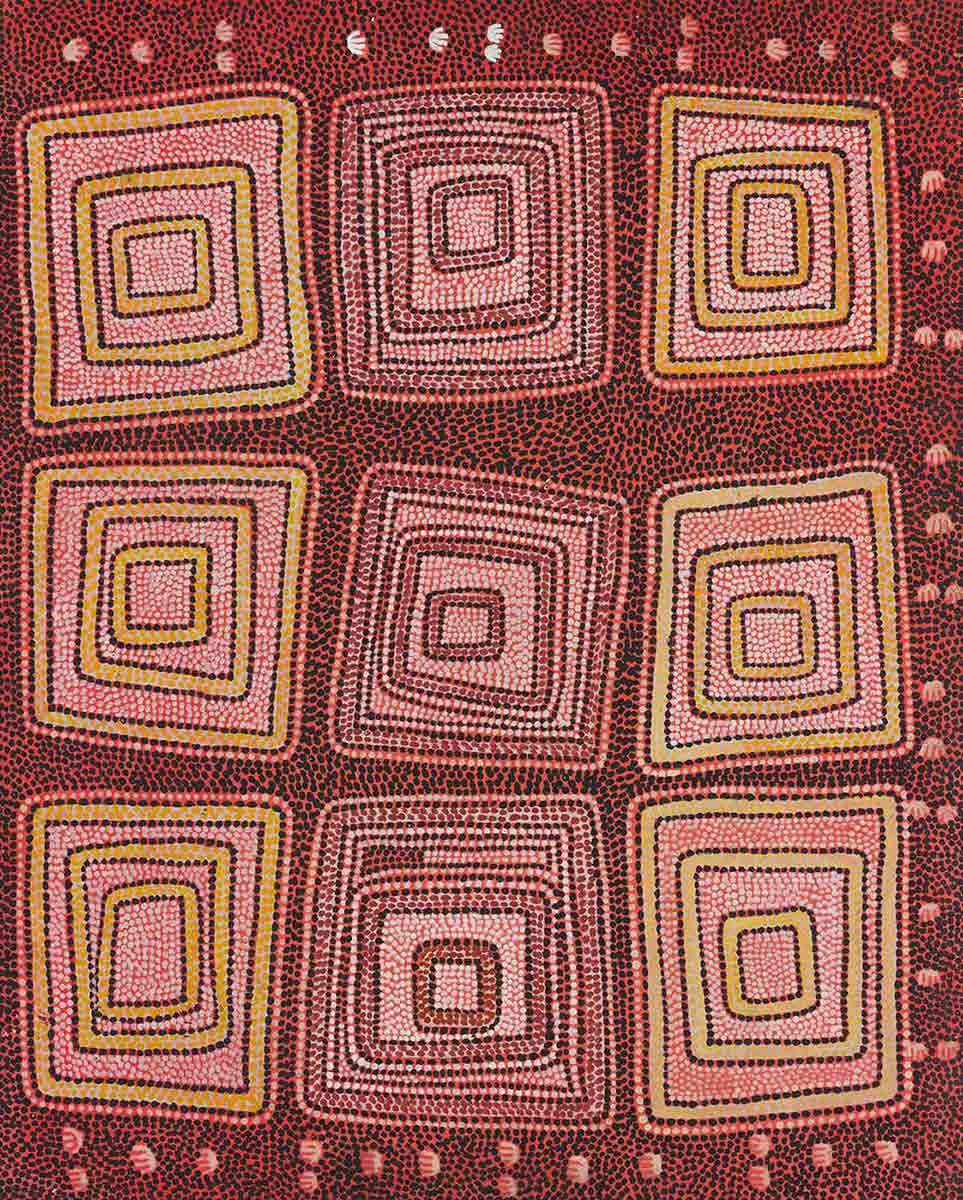About the Western Desert
The Western Desert covers a broad area which includes most of the interior of Western Australia, northern South Australia and the southwest corner of the Northern Territory. The Aboriginal communities scattered throughout this area are among Australia's most prolific art producers.
Western Desert people have much in common. People from across the region are often related through marriage and familial ties. They speak dialects of a broadly similar language, known as the Western Desert language, and have a similar history of contact with Europeans. Several major Dreaming tracks span the entire region, linking people over a vast area.
The National Museum of Australia has a large and evolving collection of Western Desert art and continues to work on heritage projects and exhibitions including Papunya Painting, Ernabella, Yiwarra Kuju: The Canning Stock Route, Warakurna and the Seven Sisters.
Warakurna and the figurative style
The last 2 decades has seen a proliferation of new art centres springing up across the Western Desert which has given rise to a great diversity in form.
Warakurna Artists, established in 2005, is an emerging Western Desert art centre which has added a figurative storytelling element to its repertoire. The Warakurna paintings draw on a long tradition of Tjukurrpa (Dreaming) paintings. At the same time, the artists are taking on a wider range of subjects, including historical narratives and contemporary stories about life in the community.
The National Museum of Australia's Warakurna collection contains paintings produced in 2011–12 and reflects a branch of the highly dynamic contemporary Western Desert art scene.
A selection of works from Warakurna: All the Stories Got into our Minds and Eyes:
The Canning Stock Route collection
The works in this collection were painted in 2007 and tell the story of the Canning Stock Route's impact on Aboriginal people, and the importance of the Country that surrounds it, through the works of senior and emerging artists and the stories of traditional custodians. It is a story of contact, conflict and survival, of exodus and return, seen through Aboriginal eyes, and interpreted through their voices, art and new media.
Yiwarra Kuju: The Canning Stock Route exhibition
Works from the Canning Stock Route collection were displayed in the exhibition Yiwarra Kuju: The Canning Stock Route. This exhibition was a joint initiative between the National Museum of Australia and FORM.
A selection of works from Yiwarra Kuju: The Canning Stock Route:
Papunya and the genesis of Western Desert art
The genesis of the Western Desert painting style was closely tied up with the 'back to Country' movement of the early 1970s. The early Papunya works were almost entirely Tjukurrpa (Dreaming) paintings which documented creative acts of ancestral beings which wandered the landscape.
The National Museum of Australia's Papunya painting collection documents the first decade of Western Desert art and clearly demonstrates the role painting served in enabling groups like the Pintupi to return to their traditional homelands.
The early Papunya paintings were essentially a translation of a traditional form to a new medium. Since their humble beginnings at Papunya, the acrylic painting movement has expanded through the Western Desert and has undergone a series of shifts.
By the late 1990s the paintings were less formal and more free flowing, with the user of a wider pallete of colours. This shift is well captured in the Canning Stock Route collection. The subject matter for the most part remained the Tjukurrpa beings and the country through which they travelled.
Western Desert art has often been seen as primarily abstract in its use of symbols as the dominant motif, but there has always been a figurative element. The early Papunya paintings for example were seen in some circles as being too explicit in their reproduction of actual ceremonial objects and scenes. The use of less figurative works has been linked to attempts on the part of the artists to mask the sensitive and dangerous aspects of their work.
Papunya Painting: Out of the Desert exhibition
Many of the Museum's Papunya works had been rarely seen in Australia before they went on show in the 2010 exhibition Papunya Painting: Out of the Desert. The exhibition also travelled to the National Art Museum of China.
A selection of works from Papunya:
Ernabella Arts collection
The Museum also has a continuing relationship with the Ernabella community, near Pukatja, 440 kilometres southeast of Alice Springs. Ernabella Arts is one of Australia's longest continously running Aboriginal arts organisations. The Museum holds several of its signature silk batik works and newer ceramic works incorporating the batik technique.
Western Desert: A brief history of contact
Western Desert people were among the last groups of Aboriginal people in Australia to have contact with Europeans. During the late 19th and early 20th century occasional exploring and prospecting parties passed through the area.
Members of exploring parties famously perished in the area, most notably Alfred Gibson who travelled with Ernest Giles in 1874, and the gold seeker Harold Lasseter in 1921. Others were attacked by Aboriginal groups. Reprisals for these attacks led to the murder of an unknown number of Aboriginal people.
During the first half of the 20th century the Canning Stock Route, commissioned for surveying in 1906, cut through the countries of many Western Desert groups while religious missions began to spring up. Initially, Ernabella (Presbyterian), Warburton and Mount Margaret (United Aborigines Mission) and Balgo (Jesuit) missions were focal points mainly for people living in their immediate areas.
For many people living further afield there was minimal contact with Europeans until the 1950s and 1960s when roads were built to support the joint British and Australian weapons testing program based in the South Australian desert.
In the 1960s these remaining groups were also affected by a long drought and began to drift toward places where they could obtain a reliable food and water supply. In addition, Patrol Officers deployed by the Weapons Research Establishment were responsible for the clearing of a corridor for the Blue-Streak Rocket tests.
As a result, almost all Western Desert groups were resettled in missions or government settlements by the late 1960s. Despite enormous pressures to leave their homelands, some managed resist – a last group of nine Pintupi lived in virtual isolation from outside contact on the western edge of Lake Mackay until meeting up with relatives in Kiwirrikura Community in 1984.
In 1971 the contemporary Western Desert acrylic painting movement began at Papunya settlement. Soon after, the Whitlam government was elected with a new policy of self-determination for Aboriginal people. This was to have sweeping changes in the governance of Aboriginal missions and settlements, with elected councils and appointment of advisors to assist Aboriginal people in the running of their own affairs.
The Whitlam government also promised to legislate to grant land rights and to support Western Desert groups moving back to their own country. Throughout the 1970s larger government settlements and missions were decentralised as groups moved back to set up homelands on their own country.
Explore more on Warakurna
